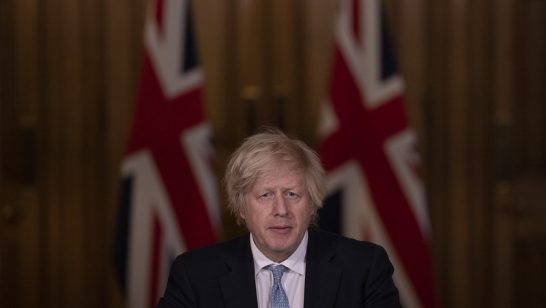
In the world today, the silence of nuclear tests relies on moratoria. These are unilateral, voluntary declarations that can be revoked at will. And Cold War history is littered with broken moratoria, most notably in the run-up to the 1962 Cuban Missile Crisis, when the two superpowers fell into a veritable testing frenzy. The entry into force of the Comprehensive Nuclear-Test-Ban Treaty (CTBT) is the only guarantee of a legally binding non-testing regime.
During negotiations for the 1963 Partial Test Ban Treaty (PTBT), a complete ban of nuclear tests was sought but did not materialize. As the PTBT turns 50 this year, we have to ask ourselves how much longer it will take to finish the job and upgrade to a comprehensive ban. And what will it take to convince the eight CTBT hold-outs – China, the Democratic People’s Republic of Korea (DPRK), Egypt, India, Iran, Israel, Pakistan and the United States – to formally embrace the Treaty?
To a certain extent, this is a classic case of lack of political leadership: country A is looking to country B to go first, and vice-versa. Regional instability in the Middle East and South Asia also plays a role. Yet, in the long run, I am optimistic that not only will the no-testing norm prevail, it will eventually be set in stone by the entry into force of the CTBT. Let me give you four reasons why:
1. The glass is half full
Or, to be more precise, 94% full, because 183 of the world’s countries have voted for ending all nuclear testing by joining the CTBT. And, of the 44 nuclear technology capable states whose ratification is a precondition for entry into force, we have 80%, or 36, already on board. This is reflected in the long-term trend in nuclear testing. On average, 400 tests were conducted in each of the five decades preceding the adoption of the CTBT in 1996. In the 16 years since then, only a handful have been carried out. In our decade, only the DPRK has tested.
2. Zero-tolerance for nuclear testing
Once seen as a display of military prowess, nuclear testing is now widely perceived as a rogue activity. This is due in great part to the existence of the CTBT. The Treaty’s 183 signatory states have strictly adhered to its no-test norm. And they have vigorously defended it. The three countries that remain outside – India, Pakistan and the DPRK – all faced universal condemnation and unanimously-adopted UN Security Council Sanctions for conducting nuclear tests.
3. An idea whose time has come
In 2009, former U.S. Secretary of State George Shultz famously said that those in the U.S. Senate who voted against the CTBT in 1999 might have been right. But, based on new facts, they would now be right in voting for it. In my view, this may also be applied to legislators in all of the hold-out States, because although there may have been legitimate concerns keeping countries from embracing the CTBT shortly after its adoption, today they no longer exist.
Probably the most important consideration for any arms control treaty is that of verifiability. Could a nuclear explosion escape detection? That was a valid concern when the CTBT’s verification regime was a mere blueprint. But the blueprint has now evolved into a globe-spanning network of nearly 300 stations, equivalent to 85% of the final setup, sending up to 16 gigabyte of data in near-real time to the CTBTO, where it is processed and made available to Member States. Tried and tested by the DPRK announced nuclear tests, the system repeatedly proved its ability to quickly, reliably and precisely detect suspicious events.
In the United States, the latest report on the CTBT by the National Academy of Sciences not only gave a positive assessment of our verification capabilities, it also gave favourable technical advice on maintaining the U.S. arsenal without nuclear testing. In a recent authoritative article in the Huffington Post, James Kearney, Hans Blix, Lord Browne and Sir Jeremy Greenstock cited this and numerous other civil society reports as helping to prepare the ground ahead of an informed and constructive U.S. Senate debate on CTBT ratification. Ratification of the Treaty, they state, is in the national security interests of the United States and would marginalize any country that chooses to remain outside of it.
4. Heavy investments by Member States
Our Member States continue to invest heavily in us – to date, around one billion US$ for the establishment of the verification regime. The European Union and the United States have also provided millions in voluntary contributions that help us further enhance the system and enable developing countries in particular to master the verification technologies.
In terms of a return on investment, we provide the confidence that no nuclear test can go undetected. Some 130 Member States receive and use our data on a daily basis. The CTBT Science and Technology conference held in June has become the Mecca of scientific research and knowledge exchange between the CTBTO experts and the international scientific community. Their feedback helps us to constantly improve. In addition, and as a by-product, our data has proven useful for disaster mitigation and scientific research.
And, finally, in terms of political energy, it is heartening to see our Member States tirelessly pushing for the CTBT’s entry into force. Foreign Ministers will do just that when they gather for the next Article XIV conference on 27 September, during UN Ministerial Week in New York.
These are the reasons for my optimism. Yes, it will take patience and perseverance. But I am confident that we will not have to wait another 50 years to achieve our goals. And I am determined to do all in my power to support this process.
The opinions articulated above represent the views of the author(s), and do not necessarily reflect the position of the European Leadership Network or any of its members. The ELN’s aim is to encourage debates that will help develop Europe’s capacity to address the pressing foreign, defence, and security challenges of our time.



